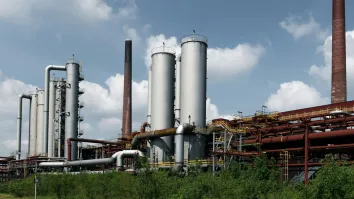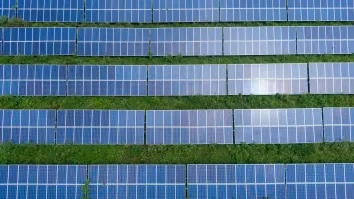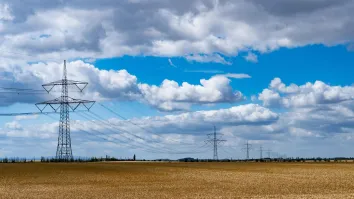5 Reasons Why Battery Storage will take off at Southeast Asia's Gas-Fired Facilities
By Frank JakobHow will Southeast Asia’s electric utility market evolve as it emerges from the fall out and impact of COVID-19 on the global economy? Already facing what was predicted as moderate GDP growth rates and a slowdown in the growth of demand for electricity, the region could also be coping with increased pressure to lower electricity rates and sustained pressure to broaden the energy mix, transitioning to cleaner forms of generation.
One positive outcome of the worldwide response to contain the pandemic has been the improvement in air-quality, notable in urban areas where electric power is needed most. While attributed to the decreased need for vehicle transportation, a noticeable portion of the improvement has been from reduced and more steady electricity demand. The latter two items combined, reduce the need for “peaking power plants” to operate.
Undoubtedly, working towards increased operational and cost efficiencies is going to be key. Investments that extend the lifecycle of power plants and take greater advantage of existing assets are going to feature prominently in power developers’ and utilities’ mid- and long-term planning. The integration of energy storage technologies like lithium-ion battery energy storage systems (BESS) at fuel-fired facilities is one such near term opportunity. In the longer term, advancements in thermal energy storage (TES) systems can accomplish even more improvements. Such “hybrid” systems that combine generation with storage are the next new wave in power generation as variable renewable electricity generation increases in the generation mix.
We have identified five reasons why Southeast Asia’s electricity grid, its fuel-fired infrastructure, is primed for investments in BESS.
1. Fuel-Fired Generating Assets are Young. A lot of capital is invested in Southeast Asia’s relatively young, particularly gas-fired, power infrastructure. The large majority of the region’s 90+ gigawatts (GW) of facilities are well within their operational lifespans with approximately a third of generation capacity less than ten years old. Investors will seek to improve the returns and revenues from these facilities and extend their lifecycle.
2. Grid Resilience. Grids are more complex to manage than ever before. Not only is load varying, as it has always been, but now generation is also varying. This creates real challenges for grid operators today and tomorrow. Increasing amounts of distributed energy resources – both new variable generation (e.g. renewable energy) and new variable load (e.g. electric vehicles) – put strain on the grid. The grid can be knocked off balance – sometimes suddenly – when large loads from industrial customers come online or when solar generation disappears as a period of cloud cover occurs. As the generation and load imbalance increases, the alternating current (ac) frequency of the grid can deviate from its nominal operating point. Fast, flexible generation sources are needed to address grid imbalance and restore the grid to normal frequency operations.
BESS together with gas-turbine facilities is a new, improved, hybrid way to balance the grid, more effectively providing rapid response, milder ramp rates, shorter run times and fewer starts and stops.
3. Improved Plant Performance. Gas turbines have long played a central role in helping supply meet demand, given their ability to quickly flex, ramping up or down following demand peaks and valleys. Efficiency is diminished however, when running above or below its optimal point. With battery storage-augmented gas turbines, the storage performs as a new kind of reserve that springs to life immediately to smooth and optimize turbine performance levels.
In addition, BESS with storage durations of one to four hours, for example, can be designed to avoid turbine operation when short-duration run times are forecast. In simple terms, a reduced number of gas turbine starts and stops can translate to longer operating life – measured in years – and reduced wear and tear – measured in lower costs. The same applies to reducing the steepness or magnitude of ramping required, which is increasingly happening as more variable renewable energy is added to the grid. In some cases, grid demands increase beyond the existing capability of gas turbines to follow.
4. Improving Assets’ Sustainability. Adding BESS to a gas-fired generating asset can play a role in addressing sustainability challenges facing infrastructure owners. Integrated BESS is an effective way to offset and reduce overall emission rates at the existing gas-fired plants. Such investments will reduce future pressures to decommission and avoid near- or mid-term scenarios where gas facilities become stranded assets.
5. Economics. Like solar and wind technologies, the capital cost for lithium-ion battery systems continues to decline year over year. Consumer demand for mobiles devices and electric vehicles is driving down the cost for BESS because they share the same lithium ion cells and benefit from the economies of scale of these two huge markets. Battery storage is approximately 75% less expensive than it was ten years ago and projected to be less than half of today’s price by the end of the decade.
As more and more variable renewable energy is added into the grid throughout the world, we are seeing the capacity factors of base-load generators (the amount of electricity produced versus the generator’s maximum potential) also decreasing. This is leading to significant revenue erosion over time and less efficient operation which in turns leads to increased fuel consumption and higher emissions. Integrating BESS can diminish this growing impact.
In addition, when not called to operate for the gas turbine, the BESS can also participate in ancillary services markets for grid support, providing power quality services, frequency regulation, and primary and secondary frequency reserves representing additional revenue as local electricity markets allow.
Finally, although domestic gas production and supply is declining in the region, the long-term cost model for LNG importation as a fuel source looks favorable. Therefore, gas will continue as part of the energy mix for the foreseeable future.
6. Bonus Reason: Speed to Market. One of the great advantages with BESS is that it can be deployed quickly delivering immediate impact. There is limited BESS in operation in the region today, but the hybrid solution, BESS added to existing generation, has been proven from demonstration projects to full deployment at a number of facilities in the United States, Germany, and other markets. Megawatt (MW) scale deployment of BESS is known to be achieved in less than 100 days from contractual agreement to commissioning.
Beyond retrofitting assets for additional use cases with BESS, it can be deployed for new builds or for repowering builds with new gas turbines that extend the life of the facility. For the foreseeable future, lithium-ion battery energy storage systems will provide the lowest capital cost energy storage option for power utilities and developers in Southeast Asia. While energy storage costs are as inexpensive as ever, the equipment is not cheap. Therefore, minimizing the amount of the energy storage in any single solution will remain critical for operators across a variety of use-cases, balancing the trade-off between investment and return that these new, hybrid systems bring to the market.




















 Advertise
Advertise






